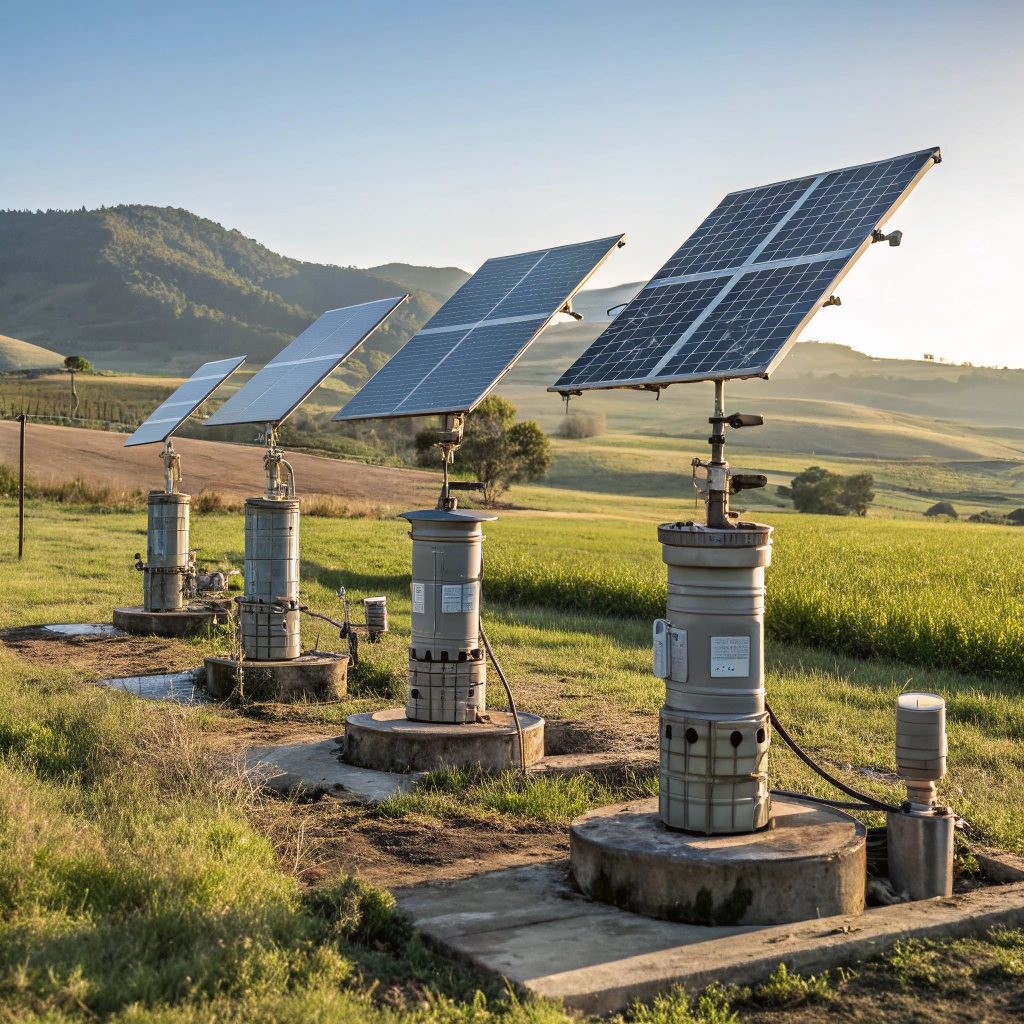Research and Application of Solar Water Pumping Core Technology
•
Research and Application of Solar Water Pumping Core Technology
How can we harness solar energy more efficiently to power water pumping systems? Solar water pumping technology is revolutionizing irrigation and water supply in remote areas, but optimizing its core components remains a key challenge.
Solar water pumping systems rely on optimized PV array design, MPPT technology, and efficient energy storage to maximize performance while minimizing costs, making them ideal for off-grid agricultural and community water supply applications.

As the demand for sustainable water solutions grows, understanding the technical nuances of solar-powered pumping becomes critical. Let’s dive into the core technologies that make these systems reliable and cost-effective.
Optimised Design for Matching PV Array and Water Pump
Why is matching the PV array to the water pump crucial for system efficiency? A poorly sized array can lead to wasted energy or insufficient power output.
Proper PV-pump matching balances voltage, current, and power requirements to ensure the system operates at peak efficiency, reducing energy losses and extending component lifespan.
Key Considerations for PV-Pump Matching
- Pump Load Characteristics: Centrifugal vs. displacement pumps require different voltage-current profiles.
- Solar Irradiance Variability: Oversizing the array compensates for cloudy days, while undersizing risks pump stalling.
- MPPT Integration: Ensures maximum power extraction under varying sunlight conditions.
| Design Factor | Impact on System Performance |
|---|---|
| PV Array Voltage | Must exceed pump startup voltage |
| Pump Type (AC/DC) | Affects inverter requirements |
| Daily Water Demand | Determines array capacity and battery backup needs |
For larger installations, a hybrid system (solar + grid/diesel backup) may be necessary to ensure uninterrupted operation. Recent studies show a 20–30% efficiency gain when using dynamic modeling tools to simulate site-specific conditions (reference).
Application of Maximum Power Point Tracking (MPPT) Technology in Water Pumping Systems
Can MPPT really boost solar water pump performance? Without it, up to 30% of available solar energy may go untapped.
MPPT controllers dynamically adjust electrical load to extract maximum power from PV panels, improving efficiency by 15–25% compared to traditional direct-coupled systems.
How MPPT Enhances Pumping Systems
- Voltage Conversion: Steps up/down voltage to match pump requirements.
- Irradiance Adaptation: Maintains optimal power flow during partial shading or low light.
- Soft Start: Reduces mechanical stress on pumps during startup.
MPPT Algorithms Comparison:
- Perturb & Observe (P&O): Simple but prone to oscillation.
- Incremental Conductance (INC): More accurate under rapid irradiance changes.
Field tests in sub-Saharan Africa demonstrated a 40% increase in daily water output when MPPT was paired with efficient DC pumps (reference).
High Efficiency Energy Storage and Energy Management Strategies
What happens when the sun isn’t shining? Energy storage bridges the gap, but mismanagement can skyrocket costs.
Lithium-ion batteries and smart controllers optimize energy use, storing excess solar power for cloudy days while preventing battery degradation through adaptive charging protocols.
Storage Solutions Compared
| Technology | Pros | Cons |
|---|---|---|
| Lithium-Ion | High cycle life, fast charge | High upfront cost |
| Lead-Acid | Low cost, reliable | Short lifespan, maintenance |
| Water Storage | Zero energy loss | Requires elevation |
Smart Management Tactics:
- Time-shifting pump operation to midday peak production.
- Prioritizing critical loads during low-energy periods.
In India, battery-less solar pumps with daytime-only operation reduced costs by 45%, proving viable for regions with consistent sunlight (reference).
Conclusion
Optimizing PV-pump matching, MPPT tech, and energy storage transforms solar water pumping into a scalable, sustainable solution for global water challenges.




